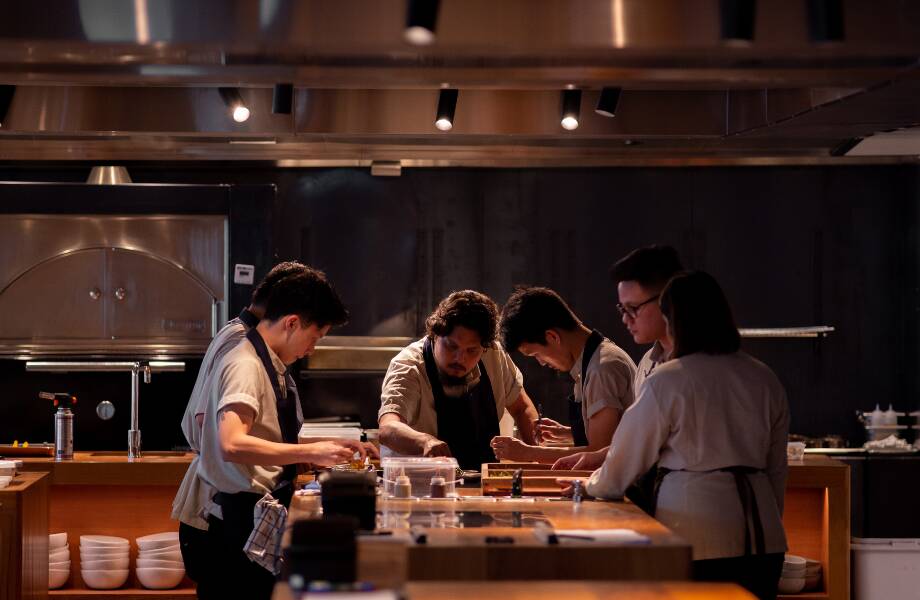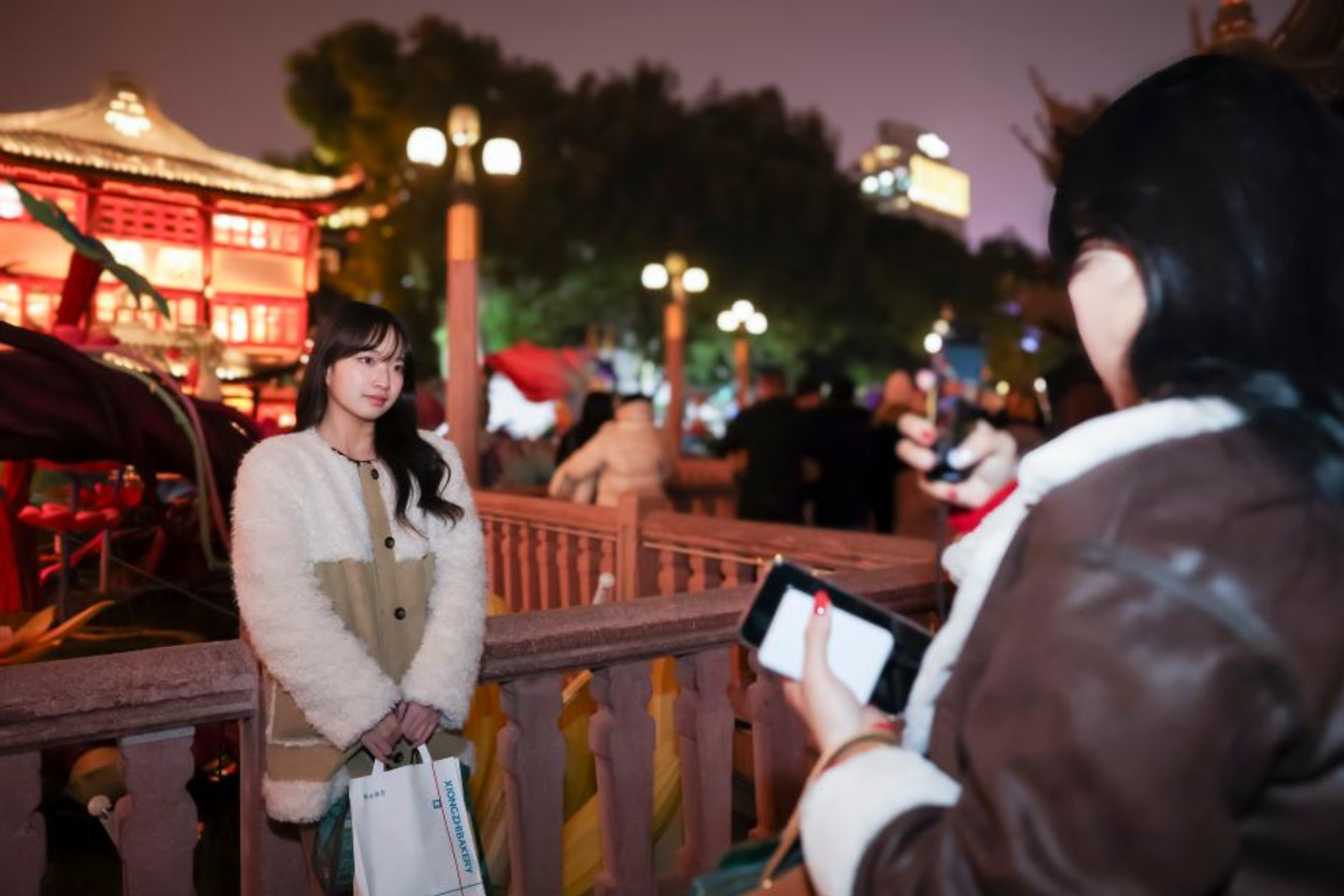This article is brought to you in collaboration with BottlesXO.
Since the early 2010s, much has been made about the growing taste for wine in China. Once solely a commodity for the wealthy in modern China, research documented a climbing craving among the country’s middle class — at its peak in 2014, China beat out France by having the biggest market for it in the world. By all accounts, a crop of curious well-travelled, mostly upper- to middle-class Chinese are expanding their interest and depth of knowledge into grape-producing regions both old and new — including those within their own country.
Domestic wine production has also continued to take root, producing a number of award-winning boutique brands and making wine tourism destinations out of places such as Shanxi province and Ningxia autonomous region, the latter of which has been lauded as the “Napa Valley of China.” And as the grape has become more widely enjoyed, women have become a growing force in the fields of China’s vineyards, as experts in tasting, and even at their keyboards, determining how wine is made, sold, and consumed.

In 2020, as China recovers from the dual blow of a pandemic and economic slowdown, where does wine stand with drinkers today?
We spoke to a handful of female experts about China’s flourishing love affair with vino, and the role they see women playing to shape the country’s quickly-changing tastes.
Back to the Vine
The cultivation of Vinis vinifera (the common wine grape) actually has a history in China that is millennia old. Though its cultivation as we know it is thought to have started in the Han dynasty (202 BCE-220 CE), drinking wine (or putaojiu 葡萄酒) flourished in the Tang dynasty (618-690, 705-907 CE), with an appreciation for it lovingly documented in the work of poets such as Li Bai.
As powers and values shifted throughout the dynasties, a proclivity for wine was gradually eclipsed by the potent baijiu (白酒), a fermented rice liquor, and eventually by beer, thanks to the presence of German immigrants in northern China. It wasn’t until the late 19th century that the wineries we see today even began to appear.
Though exports from China’s largest producers, such as Great Wall and Dynasty, can be found on supermarket shelves overseas, smaller vineyards have more easily achieved high-level recognition. Today, a handful of boutique vineyards from Yunnan, Shanxi, and Xinjiang have helped make their respective regions “up and coming” for wine production as well as sites for tourism.
Ningxia in particular has become a hallmark of the country’s potential for wine excellence. In 2011, bottles from Ningxia famously upset those from France’s Bordeaux in a blind taste test competition, with four out of the five winners being from the Chinese region.
Import Appeal
Yet while China has produced international award-winning wine brands, its drinkers largely still favor imported. Imported brands have now grown to 60% of the market share, according to a recent report by China Alcoholic Drinks Association (CADA).
Due to steep production costs for boutique wines, “it’s just more expensive to buy local than imported for the same quality,” says Jasmine Jin, a Shanghai-based micro-influencer and wine lover. What’s more, she observes, many local buyers still don’t know about them.

Jasmine Jin pouring wine at a BottlesXO tasting in Shanghai
Zhang Mengyuan, a WSET Level 3 certified wine expert and copywriter for delivery app BottlesXO, says that this year the platform added two Chinese wineries, one of which was Silver Heights — a celebrated winery that produced one of the taste test winners in 2011. “We chose to work with this brand because they are going against the tide,” she says. “The market can be very homogenous, but they are using ingenuity to make wine. Ultimately, consumers still don’t know very much, so we want to show consumers what Chinese wine can be.”
Jin herself recalls being surprised by a number of wines that she recently tried from Grace Vineyard, an over two-decade-old operation in Shanxi. “At the first sip, you could feel the taste spread throughout your mouth, with the full-bodied flavor hitting with the impact of a rocket jet,” she says. “But then your throat receives the richness of it — something which I had never really tasted in other types of wine before. I really hope more Chinese wine can develop its own unique characteristics like this.”
Women Raise a Glass
As of 2019, China had over 52 million drinkers of imported wine — just under half of its urban mid-to-high income population, according to data from leading wine consultancy Wine Intelligence — of which women make up a growing number.
A 2019 report by Chinese ecommerce platform Suning said the number of female wine consumers in the country was climbing five percent year-on-year. Driving the trend are millennial women, who are the fastest growing demographic overall to embrace casual drinking.
Ying Guo, an independent sommelier and consultant who worked in London before returning to China in 2019, points out that women are often the majority in wine education courses as well as its leading consumers. “In 2011, it wasn’t really a trend — now it’s everywhere,” she says. “Go to any wine bar in the city, and you’ll often come across a table of lively young, female drinkers.”

Though women drive the consumption of wine globally, the habit of casual drinking is for many Chinese women quite new. Traditionally, women have tended to drink less than men, due to it being considered problematic in certain circles with China. To an extent grape wine has overcome this double standard, becoming a more socially acceptable choice for women due to its low alcohol content and health benefits.
“I don’t normally drink alcohol,” says Ellie Zhao, 27, who lives in the eastern Chinese city of Hangzhou. “I have low tolerance and I don’t really know how to enjoy it. But I think wine tastes much better than other types of liquor, and my mom told me that drinking a bit of wine now and then is good for my skin. So I drink a bit of it sometimes at social gatherings.”
Zhao isn’t alone — a 2018 survey of mainland Chinese drinkers found that though 77% of respondents cited “health” as their primary reason for consuming wine; another 61% of female respondents cited “beauty” as a deciding factor. The report from Suning also observed that while red wine still makes up a majority of wine drunk in China, women drinkers seem to increasingly prefer sweet and sparkling wines.
Zhang says given that 60% of the app’s customers today are women, buying behavior has shifted substantially in BottlesXO’s five years of operation — their best selling wine is now prosecco. “Five years ago, 90% of the wine we were selling was red,” she says. “Now, about two out of every five bottles is white or sparkling. It’s safe to say that that’s because of this demographic.”
Many alcohol producers, both of wine and of other types of alcohol, have tried to capitalize on the growing market for female drinkers in China. Chinese brand Changbai Mountain (长白山) created a set of ice wines for female drinkers packed in thinner, smaller bottles, while Hoegaarden marketed its rosée beers in China to target career-minded, financially independent women. Just this year, Dolly Huang of Budweiser China told CGTN that it was preparing to launch more products that “meet women’s demands in flavors and packaging.”

An ad for Hoegaarden Rosée targeting Chinese women in Shanghai’s West Nanjing Road subway station
Though these tactics could be read as superficially pandering to women, many we spoke to saw it as a wise move to reach their target market.
Zhang cites Chandon Me as an example of how an international company cleverly targeted this growing craving. With the “Me” line, Moët and Chandon’s China-based joint venture created a demi sec sparkling red wine that was seemingly tailored to Chinese women’s tastes, and picked a Chinese name that plays with the Mandarin words for “sweet, secret, and close female friendship,” according to Jing Daily.
Zhang adds: “In the Zhou Li [周禮, a classic Confucian text], there’s a passage that refers to ‘thirty women in charge of drink’ — ‘nvjiu sanshi ren’ (女酒三十人). This to me says Chinese women have been running the show since the very beginning.”
Wine Online
As more millennials (especially women) embrace casual drinking, online platforms are proving a place where they can learn — and purchase — more.
One influencer that helped pop the cork for netizens is Wang Shenghan, the leading wine influencer in mainland China. Wang, who goes by the name “Drunken Goose” on Chinese social media, leveraged her training at Le Cordon Bleu in France into a vlog series about wine on her platform, “Drunken Goose’s Wine Daily,” which earned her over 1.3 million followers on microblogging platform Weibo.
In the videos, the dimpled hostess breaks down the basics for her viewers such as how to judge and taste wine, and how to pair them with traditional Chinese foods such as hot pot.
Interestingly, she also sets the scene by filming herself in various scenarios in which different types of wine can be paired and drunk. Jin observes that such tactics not only flatten the learning curve for wine, but also helps people picture themselves picking up the habit. “Selling wine is really just like selling any other lifestyle habit — it’s really about a way of life,” she says. “Just like you’d sell a high-end skincare product or bag — except it doesn’t necessarily have to be high-end.”
“I do think wine needs to be tasted and appreciated carefully, and food pairing is part of that,” says Zhang. “When I write articles in Chinese [for BottlesXO], I try to act as a ‘spokesperson’ for the wine. Presenting the range of stories behind it, showing that it’s the product of painstaking work and a rich tradition of artistry, as well as has this wonderful connection with nature — rather than just something you drink with dinner.”
“People nowadays associate wine with this fashionable way of life,” she adds, “but I think it’s also a recipe for happiness.”
Taking Root
As import sale growth slowed from its peak in 2014, and volume consumption over the last two years, experts speculated that this would mark the “end of China’s ‘wine boom.’” But insiders believe that that only means more needs to be done in getting wine out of the cellar and onto tables around the country.
Though wine was increasingly embraced by China’s growing middle class in the last several years, consumption is still concentrated in the country’s first- and second-tier metropolitan areas, such as Shanghai and Beijing. Guo recalls that when she began working in Shanghai, very few customers knew about influential wine regions such as Burgundy. Today, not only is Burgundy wine popular, she says, but also more niche regions and varieties — such as wine from the region around Italy’s Mount Etna or natural wine — have a growing base of enthusiasts within the city.
“On BottlesXO, we have a nice selection of biodynamic, organic, vegan, and sulfites-free wines,” says Zhang. “In recent years — especially in Shanghai — there has definitely been more of an interest in them, as health consciousness has become a growing trend [in China].”

“I’m amazed by the speed at which Shanghai has grasped wine. It really is the most cutting-edge city in China,” says Guo. “But compared to London, Tokyo, or New York, our openness and understanding of wine still has a lot of room for expansion.”
Zhang believes that it won’t be long before it begins seeping into smaller cities, however, thanks to the virulent growth of online shopping in China. A 2018 report by Wine Intelligence showed that 48% of people purchasing wine in China were buying it online, largely through ecommerce platforms such as JD.com and Tmall. “[These platforms], as well as national and regional wine chains, have created new channels for people to access wine, which expands it to an entirely new demographic,” says Zhang. “So we can expect this trend to grow in third-tier cities.”
Amid lockdowns during the Covid-19 pandemic, in which bars were forced to close and offline sales became impossible, Chinese customers also had to rely on delivery apps in order to purchase goods like wine — habits that some speculate are likely to linger after the pandemic is over.
Related:
 Has Covid-19 Permanently Changed China’s Daily Reliance on Tech?From food to retail, technology changed daily life in China for most of 2020 – but how much of it will last?Article Sep 01, 2020
Has Covid-19 Permanently Changed China’s Daily Reliance on Tech?From food to retail, technology changed daily life in China for most of 2020 – but how much of it will last?Article Sep 01, 2020
Though facing stiff competition from liquors with a lengthier, uninterrupted history, Chinese drinkers, sommeliers, and producers — led by women in the field — are cultivating a taste for the grape that looks unlikely to run dry.
Users in Shanghai, Suzhou, and Hong Kong can download the BottlesXO app here (for iOS) and here (for Android).
Additional reporting by Siyuan Meng
Translations by Jocelyn Yang
















